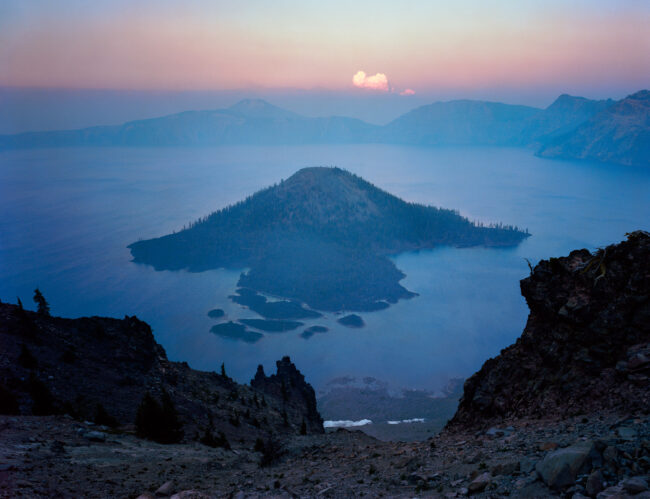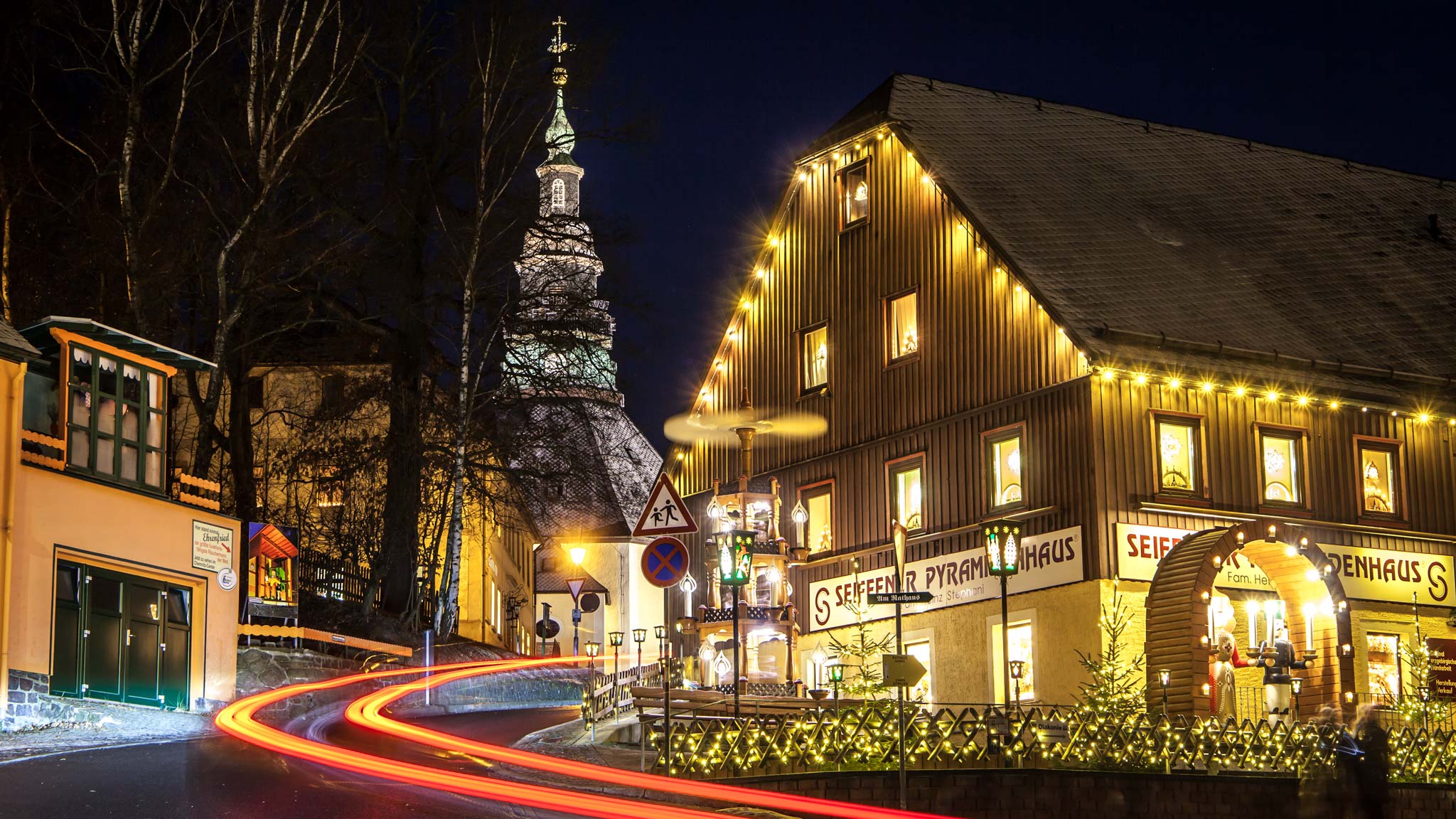The 16 best national parks to visit in India
With more than 100 national parks, India is a playground for wildlife fans. Here are the best national parks for spotting tigers, elephants and more.

As the morning sun peeks through the dense jungle foliage, brown-headed barbets rustle their feathers and welcome the day with their characteristic metronome call. Somewhere on a hillside, a sambar deer stomps its feet and cries out in panic. A tiger is on the prowl, and if you're lucky, you might see it walk right by – it's all part of the experience of visiting India's wonderful national parks.
With its extraordinarily diverse landscapes – encompassing montane, dry arid, deciduous and tropical forests stretching from the Himalayas to the tip of Kanyakumari – India offers rich pickings for nature lovers. And major successes in growing populations of endangered species such as the royal Bengal tiger and one-horned rhinoceros have earned the nation a global reputation for conservation.
With 106 national parks dotted around the country, the choices are endless. You can embark on safaris by 4WD, by boat, on foot, and even on horseback. You can go on enchanting hikes and treks through mountains and remote villages to gaze at majestic natural vistas. You can go herping or birdwatching in some of Asia's bird and reptile hotspots.
You can also immerse yourself in local traditions, culture and cuisine, placing a national park visit at the center of an eco-tourism holiday. Here's our guide to India’s best national parks for stunning scenery and exciting wildlife encounters.
1. Ranthambore National Park, Rajasthan
Best park for spotting tigers in regal surroundings
Famous for its royal fort, Hindu pilgrimages through tiger territory and luxurious holiday escapes, this former royal game reserve in eastern Rajasthan stands as one of India’s most exciting and popular wildlife destinations.
Dry deciduous forests, rocky plateaus and scattered water sources set the stage for thrilling 4WD safaris, with tigers often spotted lounging in the shadow of Ranthambhore Fort – a 10th-century citadel looming high above the forest. Inside its looming walls, a famous Ganesh temple lures pilgrims daily.
The park was established in 1955, but it became part of Project Tiger in 1973, and it has an excellent reputation for sightings of regal tigers, who seem quite nonchalant about the lines of safari vehicles trailing behind them.
Widely photographed and documented by wildlife photographers and filmmakers, this park is a great place to catch photos of India's endangered tigers, and gain an understanding of their delicate coexistence with the humans sharing their natural ranges.
Accessible by bus or train from Delhi or Jaipur, the nearby town of Sawai Madhopur offers appealing accommodations across all price points, ranging from simple budget hotels to luxury properties such as Aman-i-Khás and boutique stays like Khem Villas, meaning ample choices for visitors.
While you're here, consider a detour to the National Chambal Gharial Sanctuary, located just 35km (22 miles) from Ranthambore. Here, you can see endangered gharials (slender-snouted fish-eating crocodiles) basking on the sandbanks of one of the cleanest riverine habitats in the country.
Insider tip: The park is popular, so it's best to arrange a dawn or afternoon safari before you arrive through a tour agent or a hotel in the vicinity. Safaris rotate around five core zones that are busy throughout the season, while Zones 6 to 10 are designated as buffers, offering relatively quieter safaris.
2. Kanha Tiger Reserve, Madhya Pradesh
Best for spectacular tiger sightings
One of the oldest and best-managed national parks in the country, Kanha Tiger Reserve near Jabalpur in Madhya Pradesh is a nationally important center for conservation research, running development, training and methodology trials for the National Tiger Conservation Authority (NTCA). It's also one of the most intriguing places to spot tigers in India.
Established in 1955 in the hills of the Maikal range, Kanha packs 1945 sq km (751 sq miles) of breathtaking landscapes with a healthy population of tigers, leopards, barasingha (endangered swamp deer) and sloth bears. It was declared a tiger reserve in 1973, and tiger sightings are still the main lure today.
But don't overlook the herbivore species here. The threatened barasingha has a slow birth rate, with breeding pairs producing only one fawn a year, but the population in Kanha has bounced back thanks to careful conservation measures taken since the 1970s.
Visitors can see conservation methods at work – look out for protected breeding areas for blackbucks and barasinghas and funnel-shaped enclosures used to herd herbivores into vehicles for translocation. Kanha relocates spotted deer and barasinghas to other parks regularly to keep its wildlife populations in balance.
Jungle safaris by 4WD are the favored activity here, but you can also explore on guided walks through the park's buffer zone. Environmentally focused bicycle tours to local villages are another rewarding activity. Birders head to the skywalk on the banks of the Banjar River in the park's Mukki zone, where Kanha Jungle Lodge runs guided nature walks.
Kanha is an important center for training forest guides and officials, and locals have a deep knowledge and passion for the local wildlife. Women drivers and forest guides can be hired at both the Mukki and Khatia gates. Arrange safari reservations at local lodgings, or via the park's online portal.
Insider tip: Don’t miss the chance to encounter members of the Baiga tribe at one of the region's weekly markets – look out for colorful Baiga artworks and local millet-based foods.
3. Corbett Tiger Reserve, Uttarakhand
Best for tiger and elephant sightings in the foothills
The spot where India’s prestigious Project Tiger first took root, Corbett Tiger Reserve, also known as Jim Corbett National Park, takes in sal forests, bamboo groves and alpine vegetation that changes markedly as you gain altitude in the foothills of the Himalayas.
Covering an area in Uttarakhand once used by the Raj for big game hunting, the park is a testament to the vision of British hunter-turned-conservationist Edward James Corbett, author of the famous book Man Eaters of Kumaon, who embarked on a personal quest to save the area's tigers from extinction.
The conservation project set in motion by Jim Corbett evolved into Project Tiger, which celebrated its 50th anniversary in 2023. Dozens of national parks across India follow the guidelines formulated here and enshrined in the Wildlife Protection Act (1972).
Spanning more than 1318 sq km (509 sq miles), Corbett Tiger Reserve takes in green hills, grasslands, riverine vegetation and marshlands, making it ecologically rich and visually stunning. Alongside big cats, look out for Asiatic elephants, otters, sambar deer, crocodiles and Himalayan bird species such as the Himalayan monal, pied hornbill and various eagle species.
Insider tip: Forest rest houses built in the British era are now operated as accommodations in several areas of the park, allowing for a deeply immersive wilderness journey. However, accommodation options and amenities are limited in the park's core Dhikala zone, so many visitors stay at resorts outside the park; consider basing yourself in or around the town of Ramnagar.
4. Kanger Valley National Park, Chhattisgarh
Best for limestone scenery and tribal encounters
If you are a fan of geological marvels, consider visiting Kanger Valley National Park in the Bastar region of Chhattisgarh in central India. Within this easily accessible park, subterranean limestone caves contain breathtaking stalactite and stalagmite formations that are millions of years old.
The Kanger Valley lies within the Bastar Craton, one of the oldest geological formations in India, characterized by marble, limestone, quartzite and ancient volcanic rocks. Kotumsar Cave is one of the longest natural caves in the world that is open to sightseers, with five natural chambers. Subterranean pools are inhabited by blind cave-dwelling fish and other creatures that have unique evolutionary adaptations. Mythological legends swirl around the nearby Dandak and Kailash caves.
A birder’s playground, the park is surrounded by the villages of the Muria and Gond people. These tribal communities maintain a deep, spiritual connection with the forest, and follow sustainable life practices that mirror the ethos of the park itself.
Insider tip: If you visit the striking Kanger Dhara Waterfall, look out for the endangered hill myna in the surrounding rocky terrain. 
5. Nanda Devi National Park, Uttarakhand
Best for hikes through glacial landscapes
In the lap of the Himalayas, Nanda Devi National Park protects a dramatic glacial basin surrounded by a ring of 7500m (24,600ft) peaks, and drained by the Rishi Ganga River through a stunning gorge. The park is centered on the soaring mass of India's second-highest mountain, 7817m (25,646ft) Nanda Devi, which is of huge religious significance to local Hindus.
The park is only accessible on foot and its trekking trails reveal majestic views across forests of fir, birch, rhododendron and juniper trees. A journey into this stunning biosphere reserve is a soul-stirring experience – five-day treks begin and end at the pilgrimage town of Joshimath, home to the famous Narsingh Devta temple.
Glacier-fed rivers weave through a dramatic alpine wilderness that provides a refuge for rare animals such as the elusive snow leopard, Himalayan musk deer, Asiatic black bears and bharal (blue sheep), as well as myriad bird species.
Expect a thrilling ascent through a soaring landscape of wildflower meadows, dense patches of forest and sheer mountain cliffs. Spanning more than 6400 sq km (2471 sq miles), the park includes the UNESCO World Heritage-listed Valley of Flowers, famed for its summertime wildflowers. Treks to the Valley of Flowers start from the village of Govindghat near Haridwar.
6. Nagarhole National Park, Karnataka
Best place to observe elephant migrations
Nagarhole National Park in Karnataka was the private hunting reserve of the Wadiyar kings of Mysuru (Mysore) until it was declared a sanctuary in 1955, later becoming one of India's key tiger reserves. Lush with deciduous trees such as sal and sandalwood, the reserve forms part of the Kabini–Bandipur–Wayanad corridor, making it one of the few places where you can spot both tigers and large herds of elephants on a single safari.
On the fringes of the park, the waters held back by the Kabini dam lure large numbers of Asiatic elephants during the dry months from October to May. Notably, this was one of the first national parks in India to embrace eco-tourism, with environmentally sensitive accommodations and regulated access for safari groups to minimize human impact on the ecosystem.
As well as elephants and tigers, look out for signs of the park's legendary black leopards and scan the treetops for giant Malabar squirrels on a safari in the Antharasanthe zone.
Insider tip: Open-top vehicle and boat safaris are available through the lodges run by Jungle Lodges and Resorts, but you can also explore through innovative luxury accommodations on the edge of the park, such as Evolve Back near the Kabini dam. 
7. Gir National Park, Gujarat
Best place to see rare Asiatic lions
In the rugged folds of southwestern Gujarat, acacia-shaded Gir National Park is the last refuge of the majestic Asiatic lion. Here, amid sun-dappled clearings, you have an excellent chance of spotting this highly endangered big cat. The park is extremely popular, so reserve a visitor permit online well ahead of your visit.
The lions share the park with the forest-dwelling Maldhari people – a pastoral tribal community that has coexisted with the lions for generations. Their mud-and-thatch homes, known as nesses, dot the forest peripheries, adding a cultural depth to the landscape.
Around the park in Sasan-Gir, you can immerse yourself in the area's traditional culture, eating hand-made meals under shadowed mango orchards, paying a visit to the tribal villages and fishing in quiet streams. For accommodation, try the luxurious Woods at Sasan.
Insider tip: As well as visiting the national park, many visitors drop by the Devalia Safari Park, a rescue and rehabilitation center for big cats on the edge of the park.
8. Dachigam National Park, Jammu & Kashmir
Best park for rare subalpine flora and fauna
On the outskirts of Srinagar, the capital of Jammu & Kashmir, lies an almost mystical stretch of woodland. Dachigam National Park provides a vital habitat for the hangul or Kashmir stag, a majestic but critically endangered red deer species endemic to this region, with only a few hundred individuals left in the wild.
Spanning varied terrain, the park was initially protected in 1910 by the Maharaja of Kashmir to ensure a clean water supply for Srinagar city, later earning national park status thanks to its rich biodiversity. Guided trekking and photography expeditions are allowed, but numbers are strictly controlled and visitors must apply for permission to visit online.
In late spring and summer, the higher meadows burst into a carpet of wildflowers, including rare medicinal plants, rhododendrons and wild irises – a dream for botanists. Himalayan black bears frequent the lower reaches of the park, while elusive brown bears are sighted primarily in the summer months at higher elevations.
Access to the area is generally restricted to researchers and forest officials to protect the fragile environment, but limited numbers of visitors are allowed into the park each day, with a maximum of 15 people per group.
Insider tip: Bookings are available at the forest department kiosk at the park gates, but you'll need to arrive early. Alternatively, book in advance through your accommodation in Srinagar.
9. Hemis National Park, Ladakh
Best for spotting snow leopards
In the stark, moon-like expanse of Ladakh’s high-altitude deserts lies Hemis National Park — India’s largest and loftiest sanctuary. Spread across 4400 sq km (1700 sq miles) of rugged trans-Himalayan terrain, Hemis is no ordinary place.
Here, the rhythm of nature is set by the slow grind of glaciers, the wind whistling through mountain valleys, and rare but thrilling sightings of snow leopards – known as shan in the Ladakhi language – the park’s most elusive and exalted resident.
With more than 200 snow leopards thriving in its vast territory, Hemis draws intrepid wildlife photographers and big cat researchers from around the world. There are no jostling jeeps to contend with – visitors explore on foot along challenging but breathtaking trekking trails leading to glacial rivers, hidden valleys and cliffs that cradle rare Himalayan fauna.
The Kamdan and Rumbak Valleys form the core of the park, and wildlife sightings are more common here than in other parts of the sanctuary. Among many rare bird species, Tibetan snowcocks, Himalayan griffon vultures, and the rare Ladakh hill finch nest in the cliffs, while snow leopards, Tibetan wolves and red foxes roam the shadows, feeding on blue sheep and other highland herbivores.
Village homestays and a handful of luxury lodges line the trekking routes, welcoming visitors with warm hearths and traditional Ladakhi cuisine. Held in July at Hemis Gompa, the Hemis Festival adds cultural color to an otherwise adventure-led itinerary.
Insider tip: The best weather for trekking is from May to October, when Ladakh's high passes are clear from snow, but expeditions to spot snow leopards – available through operators such as Sublime Wilderness Odyssey – usually take place in the winter from January to March. Because of the elevation, Acute Mountain Sickness (AMS) is a risk in this region, so make sure you are properly acclimatized before hitting the trails.
10. Pench Tiger Reserve, Maharashtra
Best for fans of big cats and stargazing
Famed for tiger sightings, and for being the inspiration for Rudyard Kipling’s The Jungle Book, Pench Tiger Reserve is also a compelling destination for astro-tourism in India. With low levels of light pollution and clear night skies, Pench offers stargazers front-row seats for a view of the cosmos, and the park has been recognized as a Dark Sky Reserve since 2024.
From the telescope tower built by the forest department, visitors can gaze at constellations glittering above the teak forests and trace the movement of meteors across the sky. Night safaris often begin with stories about the stars, before setting off in search of nocturnal wildlife such as wolves and jackals.
You can also view the forest from an elevated section of National Hwy 44, constructed to allow wildlife to migrate safely, avoiding speeding traffic. Other thrills possible at Pench include powered paragliding and hot-air balloon flights over the forest.
Insider tip: The park straddles Madhya Pradesh and Maharashtra, with separate entry permits depending on which gate you enter from. The most used entry point is the Turia gate, about 12km (7.5 miles) west of Khawasa on the Jabalpur–Nagpur road. For stargazing, powered paragliding and hot air balloon trips, head to the Sillari gate or Kolitmara gate. The forest department maintains simple accommodations at Sillari.
11. Rani Jhansi Marine National Park, Andaman & Nicobar Islands
Best for marine adventures and beautiful sands
Far from the Indian mainland in the serene waters of the Andaman & Nicobar Islands, Rani Jhansi Marine National Park is an aquatic paradise where emerald mangroves nudge against coral-fringed bays. Off the mainstream travel circuit, the park spreads across a series of uninhabited islands, providing a haven for sea turtles, reef fish and flocks of seabirds.
The park's shallow turquoise waters hide vibrant coral reefs teeming with marine life, making this a perfect spot for snorkeling, diving, glass-bottom boat tours, or catching spectacular sunsets above the water. Watching sea turtles nest from October to April is a particularly memorable experience, and this is also the best season for underwater visibility.
Insider tip: To get to the park, you'll need to travel from Port Blair to Diglipur, and then take a boat to the islands from the Aerial Bay Jetty. You'll need an entry permit from the Forest Department Office in Diglipur; eco-activities are best booked in advance (the park is open from 8am to 3pm).
12. Sundarbans Tiger Reserve, West Bengal
Best for boat safaris through the mangroves
In the tangled delta where the Ganges, Brahmaputra and Meghna Rivers meet the Bay of Bengal, Sundarbans Tiger Reserve is a natural labyrinth, with tidal channels weaving through dense mangrove forests tangled with pneumatophores (aerial mangrove roots).
In this waterlogged environment, royal Bengal tigers showcase unique behavior such as swimming between islands, sharing their realm with saltwater crocodiles, mudskippers and kingfishers. The air of the delta carries a scent of wet earth and wild honey, and local fisherfolk and honey collectors venture into the forest to pursue their traditional livelihoods, paying homage to Bonbibi, the local forest goddess, for protection.
A UNESCO World Heritage Site, the Sundarbans is both a sanctuary and a frontier – rich in biodiversity but highly vulnerable to climate change, rising sea levels, and human encroachment into its carefully balanced ecosystems. Yet in every ripple of its saline waters, there is resilience – explore responsibly on a boat safari and help preserve its wonders for future generations.
Insider tip: Boat safaris to search for big cats can be easily arranged from Kolkata, while eco-tourism lodges offer a comfortable stay on the forest fringes. As part of your visit, browse the evening markets in Sajnekhali for wild honey and other local produce.
13. Singalila National Park, West Bengal
Best for spotting the elusive red panda
Strung along a dramatic Himalayan ridge at 3600m (11,811ft) above sea level, the Singalila National Park is West Bengal’s high-altitude treasure. It's a realm of shifting mists, rhododendron forests and panoramic views of the world’s highest peaks, including Khanchendzonga (Kanchenjunga) and on clear days, even Mt Everest.
The park is best explored on the Sandakhphu–Phalut trek – a breathtaking route that winds through blooming magnolia and rhododendron forests, bamboo groves and alpine meadows. Along the way, you might spot the elusive red panda, an iconic Himalayan species only found in this mountain habitat.
The landscape bursts into a riot of colors in spring as the trees flower, and it transforms into a golden dream by autumn as the leaves change. Whether you’re chasing Himalayan vistas or rare wildlife, Singalila serves up a soulful experience on a trek above the clouds.
Insider tip: Entry to Singalila is via Mane Bhanjan, a small hamlet near Darjeeling, and visiting requires a permit from the local Forest Department, which can also grant permission to stay overnight in forest rest houses; trekking agencies in Darjeeling can make all the arrangements. It's also possible to visit from nearby Sikkim.
14. Desert National Park, Rajasthan
Best for desert vistas and rare birdlife
Vast, wind-sculpted and golden, Rajasthan's Desert National Park feels like stepping into a living sand painting. Sprawling across the Thar Desert near Jaisalmer, the park covers a surreal mix of rolling dunes, rocky outcrops, and fossil-rich plateaus, home to desert-adapted creatures that defy this harsh environment.
Here, the elusive and endangered great Indian bustard strides past camouflaged lizards, while desert foxes and flocks of migratory eagles scout the landscape for small prey between the outcrops. Hardy shrubs such as sewan grass and various cacti and succulent species also cling to life in this arid quarter.
Camel rides and visits to desert villages add a pulse of authentic Rajasthani culture, but it's best to book a longer, multiday safari to escape the crowds of daytrippers from Jaisalmer. The park is best visited between October and March, and safaris are easy to arrange through agencies near Jaisalmer Fort.
Insider tip: If you just want a taste of the desert, visit one of the luxurious desert camps tucked among the dunes near Jaisalmer.
15. Kaziranga National Park, Assam
Best for encounters with endangered one-horned rhinos
Inscribed on the UNESCO World Heritage list in 1985, Kaziranga National Park is the crown jewel of India’s Northeast, celebrated for its incredible biodiversity and the grassland scenery along the floodplain of the mighty Brahmaputra River.
Hemmed by the Karbi Anglong mountains and lowland tea gardens, the park is most famous for its impressive population of endangered one-horned rhinos, which are easily tracked down amidst the tall elephant grass. Look out for other members of India’s "Big Five" such as the Asiatic elephant and the royal Bengal tiger. Smooth-coated otters, Asiatic water buffalo, barasingha and spot-billed pelicans can also be spotted in the marshy plains.
Kaziranga offers an unmatched experience for safari seekers. Summers bring a rich golden hue to the tall grasses, as large herbivores move in herds towards water bodies and big cats raise young cubs in the far reaches of the grasslands. Safaris on elephant-back are best avoided as carrying passengers can be harmful to the elephants; explore by 4WD instead.
In winter, it's often possible to spot river dolphins near the Diphlu River Lodge and in the Brahmaputra as the morning mist rises. Watch out for the hoolock gibbons singing through the tree canopy every morning on the way to the park gates in the Burapahar zone. Note that some people prefer to avoid the park because of its controversial anti-poacher policies.
Insider tip: Assamese cuisine is simple but delectable and easy to find in the lodges around the park, while bamboo handicrafts and local textiles produced by members of the Mising tribe are worthwhile additions to your souvenir collection. Visit government-approved stores in the Kohora area near the park ticket office.
16. Silent Valley National Park, Kerala
Best for sightings of the rare lion-tailed macaque
Located deep in the mist-laced Nilgiri Hills of Kerala, Silent Valley National Park protects an area of raw, untouched rainforest that echoes with mystery. Home to ancient trees, cloud-kissed canopies, and the elusive lion-tailed macaque, this park is one of India’s last remaining stretches of tropical evergreen forest.
Its name belies the vibrant life found inside its boundaries – tigers, leopards, Nilgiri langurs, tahr antelopes and more than 200 avian species flourish in its green expanse. The forest here is revered as a sacred, living entity by the tribal communities of the Mudugar and Irula people.
Entry is strictly controlled to preserve the park's pristine beauty, and permits must be obtained from the Mukkali Forest Office. Tourist access is only allowed with designated forest department vehicles accompanied by approved guides, to protect the forest from human disturbance. It's usually easiest to visit on an organized tour.
Practical Tips
Best time to visit: The dry months from October to May offer the best chances of spotting big mammals, but the weather can be uncomfortably hot in April and May; winters offer a more comfortable safari experience. July to September is the off-season – the monsoon brings heavy rain, and most parks close down due to flooding and waterlogged trails. Never venture into protected areas without a registered guide at any time of year.
Activities: As well as 4WD wildlife safaris, India's national parks offer a multitude of immersive experiences, from nature trails and wild foraging walks to guided hikes and treks in search of specific species. Check in with accommodations around the national parks or the forest offices at specific parks for information on activities on offer.
Booking safaris: Most national parks let visitors book safaris and entry permits via online portals, but it's usually possible to book directly with the park authorities at the entry gates, or through local accommodations or tour agencies.





















































.png?width=1920&height=1920&fit=bounds&quality=70&format=jpg&auto=webp#)



























































































































.jpg)













































































